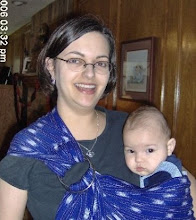It can sound so simple and efficient when an OB-GYN lays out all the reasons why she performs episiotomy before delivery. After all, it's logical that cutting or extending the vaginal opening along the perineum (between the vagina and anus) would reduce the risk of pelvic-tissue tears and ease childbirth. But studies show that severing muscles in and around the lower vaginal wall (it's more than just skin) causes as many or more problems than it prevents. Pain, irritation, muscle tears, and incontinence are all common aftereffects of episiotomy.
Last year the American College of Obstetricians and Gynecologists released new guidelines that said that episiotomy should no longer be performed routinely -- and the numbers have dropped. Many doctors now reserve episiotomy for cases when the baby is in distress. But the rates (about 25 percent in the United States) are still much too high, experts say, and some worry that it's because women aren't aware that they can decline the surgery.
"We asked women who'd delivered vaginally with episiotomy in 2005 whether they had a choice," says Eugene Declercq, Ph.D., main author of the leading national survey of childbirth in America, "Listening to Mothers II," and professor of maternal and child health at the Boston University School of Public Health. "We found that only 18 percent said they had a choice, while 73 percent said they didn't." In other words, about three of four women in childbirth were not asked about the surgery they would soon face in an urgent situation. "Women often were told, 'I can get the baby out quicker,'" Declercq says, as opposed to doctors actually asking them, 'Would you like an episiotomy?'"
Sunday, July 29, 2007
Women given unwanted episiotomies
A CNN Health article, "5 operations you don't want to get -- and what to do instead", covers episiotomies:
Wow.
Subscribe to:
Post Comments (Atom)






1 comment:
hummmmm nice and very interesting blog
here I would love to share a blog about women health tubal reversal and episiotomy
http://www.mybabydoc.com/blog/
tubal reversal
Post a Comment